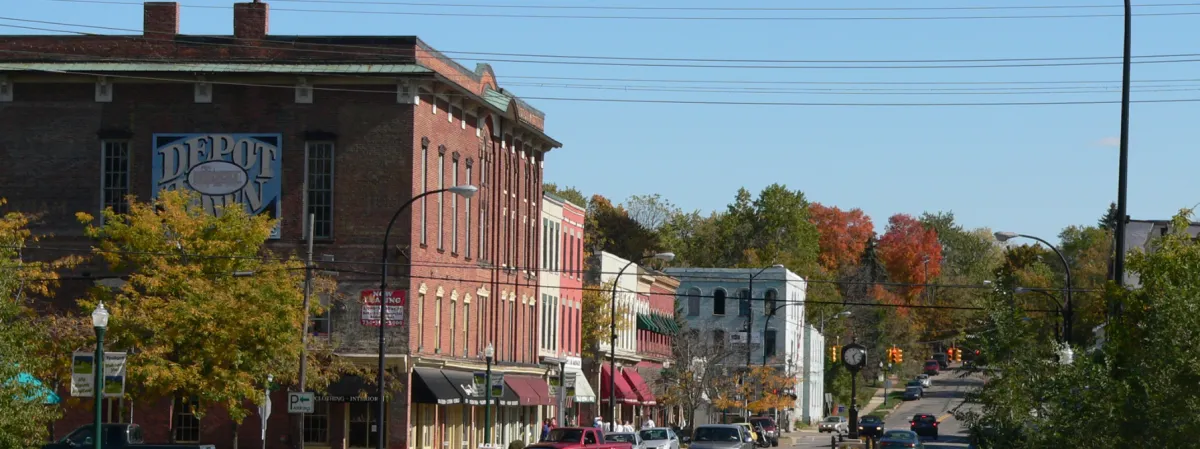
Unearthing the Historical Bonds Between Ypsilanti, Ann Arbor , and Detroit
Did you know that Ypsilanti, Ann Arbor, and Detroit share a rich history that spans over two centuries? This article explores the deep connections between these Southeast Michigan cities, focusing on their shared development, transportation links, and educational institutions. It also uncover how the University of Michigan, Detroit's industrial growth, and the Huron River have played crucial roles in shaping the region. By understanding these historical bonds, many will gain insight into the collaborative spirit that continues to drive Southeast Michigan's progress today.
Key Takeaways
Detroit's founding in 1701 laid the groundwork for Southeast Michigan 's development
Transportation links like railroads and roads fostered unity between Ypsilanti, Ann Arbor, and Detroit
Educational institutions, particularly the University of Michigan bridged communities in Southeast Michigan
Cultural and social ties strengthened community bonds through festivals, migration, and shared advocacy
Modern collaborations focus on economic development, transportation, and sustainable growth for the region
Early Connections in Southeast Michigan's Development
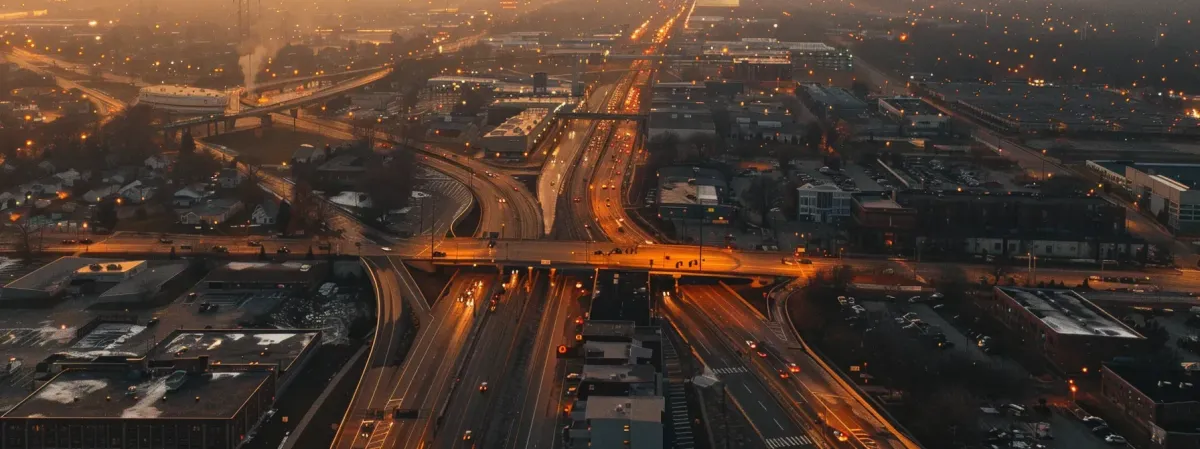
The early connections between Ypsilanti, Ann Arbor, and Detroit in Southeast Michigan's development are undeniable. There is ample information on Detroit's founding and regional influence, Ypsilanti's establishment along trade routes, Ann Arbor's origins, and interactions among early settlers. This history shapes the region's current landscape, including the Ann Arbor Area Transportation Authority and Washtenaw Community College.
The Founding of Detroit and Its Regional Influence
Detroit's founding in 1701 as a French trading post laid the groundwork for Southeast Michigan's development. As the village grew, it became a hub for trade and commerce, influencing the surrounding areas, including the future sites of Ypsilanti and Ann Arbor.
The city's expansion led to increased waste management needs, prompting early recycling efforts. This growth also spurred the establishment of educational institutions like Concordia University Ann Arbor and the construction of Michigan Stadium, which would become iconic landmarks in the region.
Ypsilanti's Establishment Along Strategic Trade Routes
Ypsilanti's establishment in 1823 along the Huron River was strategically positioned on important trade routes. This location significantly improved early settlers' quality of life, providing access to resources and commerce. The town's growth led to its incorporation in 1832, with subsequent census data reflecting its rapid development.
Ypsilanti's strategic location fostered the development of cultural institutions, including an early theatre that enhanced the community's social fabric. The town's proximity to Detroit and Ann Arbor influenced its sustainability efforts, particularly in the surrounding charter township areas. These connections played a crucial role in shaping Ypsilanti's identity and economic growth.
Ann Arbor's Origins and Ties to Neighboring Cities
Ann Arbor's founding in 1824 was closely tied to its location along the Huron River, which connected it to the Great Lakes and facilitated trade. The city's proximity to Detroit and Ypsilanti shaped its early development, as settlers and resources flowed along the trail networks that linked these growing communities.
Ann Arbor's landscape was crucial in its ties to neighboring cities, with the River Raisin watershed influencing regional agriculture and commerce. The city's growth led to environmental concerns, prompting early collaboration with neighboring communities and eventually with the United States Environmental Protection Agency to address shared ecological challenges.
Interactions Among Early Settlers and Communities
Early settlers in Ypsilanti, Ann Arbor, and Detroit forged strong connections through trade and social gatherings. These interactions led to the formation of cultural events like the Ann Arbor Film Festival, which became a cornerstone of the region's artistic community.
Collaborative efforts among these communities gave rise to organizations like Ann Arbor SPARK, fostering economic growth and innovation. The shared experiences of early settlers in Ann Arbor and neighboring areas laid the foundation for the vibrant, interconnected region we see today.
The rivers had connected the early settlers. Thus, the roads would bring them closer.
Transportation Links Forging Regional Unity
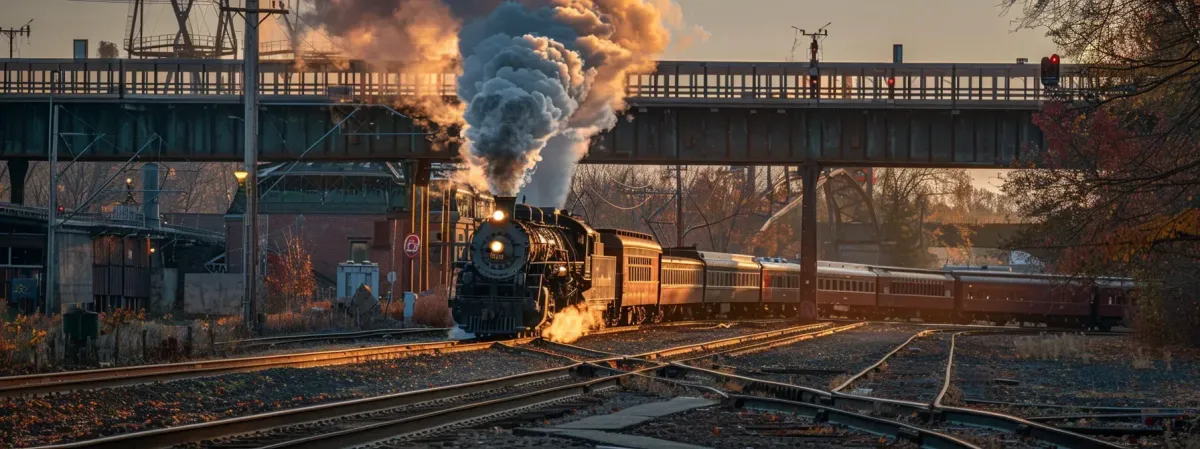
Transportation links forged unity between Ypsilanti, Ann Arbor, and Detroit. The Michigan Central Railroad, road networks, Huron River, and streetcar lines connected these cities. These developments shaped population growth, economic development, and regional democracy. United States Census data reflects the impact of these transportation links on the area's expansion.
The Michigan Central Railroad's Impact on Connectivity
Michigan Central Railroad played a pivotal role in connecting Ypsilanti, Ann Arbor, and Detroit. This railway line, completed in 1839, significantly reduced travel times between these cities, facilitating the movement of people, goods, and ideas. The improved connectivity spurred economic growth and urban development along its route.
Railroad's impact extended beyond transportation. It fostered the growth of industries in each city, as raw materials and finished products could be easily transported. This economic boost led to population increases and the expansion of urban areas, shaping the region's development. The following list outlines the key effects of the Michigan Central Railroad on the region:
Reduced travel times between cities
Facilitated movement of goods and people
Stimulated economic growth and industrialization
Encouraged urban expansion and population growth
Enhanced regional connectivity and collaboration
Development of Road Networks Between the Cities
The development of road networks between Ypsilanti, Ann Arbor, and Detroit played a crucial role in regional connectivity. The construction of the Chicago Road (now US-12) in the 1820s and 1830s connected these cities, facilitating trade and communication. This improved infrastructure led to increased economic activity and population growth along the route.
Automobile use grew in the early 20th century, and the demand for better roads intensified. The state implemented road improvement programs, resulting in the paving of major routes like Michigan Avenue. These enhanced road networks not only improved transportation but also fostered stronger economic and social ties between the three cities.
The Role of the Huron River in Trade and Communication
Huron River played a vital role in connecting Ypsilanti, Ann Arbor, and Detroit. Early settlers used the river for transportation and trade, moving goods and people between these growing communities. The river's importance grew as mills and small industries sprang up along its banks, fueling economic development in the region.
Huron River also facilitated communication between the three cities. Travelers and traders carried news and information along the waterway, fostering cultural exchange and strengthening social ties. As the region developed, the river continued to serve as a unifying force, supporting recreational activities and environmental conservation efforts that brought communities together.
Streetcar Lines and Urban Expansion
Streetcar lines played a crucial role in connecting Ypsilanti, Ann Arbor, and Detroit in the late 19th and early 20th centuries. The Detroit, Ypsilanti, Ann Arbor, and Jackson Railway, established in 1898, provided frequent service between these cities, facilitating easier commutes and fostering economic growth along its route.
Streetcar lines also significantly impacted urban expansion in these cities. As the rail network grew, new residential and commercial areas developed around stops and terminals, shaping the urban landscape we see today. This pattern of transit-oriented development laid the groundwork for future regional planning efforts and continues to influence modern transit initiatives in Southeast Michigan.
The rivers had linked the cities, but the industry would bind them. This led Money to flow like water, building a shared future.
Industrial Growth and Mutual Economic Support
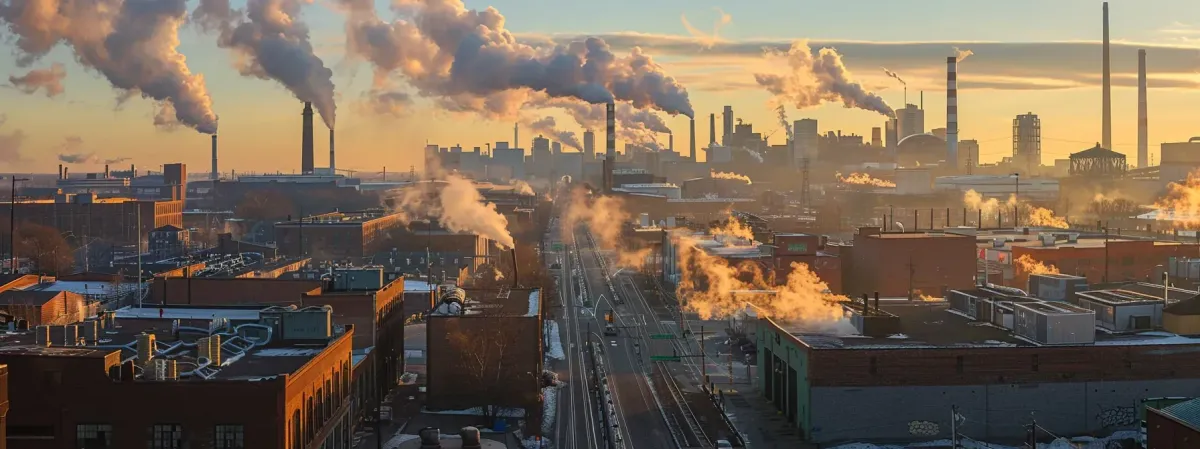
Industrial growth fostered mutual economic support between Ypsilanti, Ann Arbor, and Detroit. Detroit's automotive boom affected neighboring areas, while Ypsilanti contributed to manufacturing and labor. Ann Arbor's economy evolved towards service industries. These cities engaged in collaborative economic initiatives and trade, strengthening their regional bonds.
Detroit's Automotive Boom Affecting Neighboring Areas
Detroit's automotive boom in the early 20th century had a profound impact on neighboring areas like Ypsilanti and Ann Arbor. As Detroit's car industry expanded, it created a ripple effect of economic growth throughout Southeast Michigan, leading to increased job opportunities and population growth in surrounding communities.
Ypsilanti and Ann Arbor benefited from Detroit's automotive success through the establishment of supplier industries and satellite manufacturing facilities. This industrial growth fostered stronger economic ties between the three cities, as workers and materials flowed between them, creating a more interconnected regional economy.
Ypsilanti's Contribution to Manufacturing and Labor
Ypsilanti played a crucial role in the region's manufacturing sector, particularly with the establishment of the Willow Run plant during World War II. This facility produced B-24 bombers and employed thousands of workers, significantly boosting the local economy and contributing to the war effort.
Ypsilanti's manufacturing legacy continued with the presence of automotive plants, including those operated by Ford and General Motors. These industries not only provided jobs for local residents but also attracted workers from neighboring cities, strengthening the economic ties between Ypsilanti, Ann Arbor, and Detroit.
Ann Arbor's Economic Evolution and Service Industries
Ann Arbor's economy evolved significantly from its early manufacturing roots to a more service-oriented landscape. The presence of the University of Michigan played a crucial role in this transformation, attracting research institutions, technology companies, and healthcare facilities. This shift created a diverse economic base that complemented the industrial strengths of neighboring Ypsilanti and Detroit.
Ann Arbor's service industries have become a major driver of regional economic growth. The city's focus on education, healthcare, and technology has created high-skilled job opportunities, attracting talent from surrounding areas and beyond. This economic evolution has fostered collaboration between Ann Arbor and its neighboring cities, as evidenced by:
Joint research initiatives between universities and industries
Cross-city partnerships in healthcare and biotechnology
Technology transfer programs benefiting the entire region
Shared workforce development programs
Collaborative efforts to attract and retain businesses
Collaborative Economic Initiatives and Trade
Ypsilanti, Ann Arbor, and Detroit engaged in numerous collaborative economic initiatives. These joint efforts included regional chambers of commerce, shared workforce development programs, and coordinated marketing strategies to attract businesses and investment to Southeast Michigan.
Trade between these cities flourished, creating a robust regional economy. Local businesses frequently sourced materials and services from neighboring communities, while consumers traveled between cities for shopping and entertainment, further strengthening economic ties.
The rivers had done more than just move goods. They'd brought minds together, too.
Educational Institutions Bridging Communities

Educational institutions bridged communities in Southeast Michigan. The University of Michigan's move to Ann Arbor had a significant regional impact. Shared programs and exchanges fostered connections between cities. Community colleges linked students across the area, while research partnerships and academic collaborations strengthened ties between Ypsilanti, Ann Arbor, and Detroit.
The University of Michigan's Move and Regional Impact
University of Michigan's move from Detroit to Ann Arbor in 1837 had a profound impact on the region. This relocation not only transformed Ann Arbor into a major educational center but also strengthened the connections between the three cities as students and faculty traveled between them for academic and social purposes.
The university's presence in Ann Arbor spurred economic growth and cultural development throughout Southeast Michigan. It attracted businesses, research institutions, and talented individuals to the area, creating a ripple effect that benefited neighboring communities like Ypsilanti and Detroit. The university's regional impact continues to shape the area's educational landscape and foster collaboration between cities.
Shared Educational Programs and Exchanges
Shared educational programs and exchanges played a crucial role in bridging communities across Southeast Michigan. These initiatives fostered collaboration between institutions in Ypsilanti, Ann Arbor, and Detroit, allowing students to benefit from diverse educational experiences. Cross-registration agreements enabled students to take courses at partner institutions, broadening their academic horizons.
These shared programs extended beyond traditional academics. Joint research projects, internship exchanges, and collaborative events strengthened ties between the cities' educational institutions. These initiatives not only enhanced educational opportunities but also promoted cultural exchange and regional unity. The key benefits of these shared programs include:
Expanded course offerings for students
Increased research collaboration
Enhanced networking opportunities
Improved resource sharing between institutions
Strengthened regional identity and cooperation
Community Colleges Linking Students Across Cities
Community colleges played a vital role in linking students across Ypsilanti, Ann Arbor, and Detroit. Washtenaw Community College, in particular, served as a central hub for students from all three cities, offering affordable education and transfer programs to four-year institutions.
These community colleges fostered regional connections through shared resources and collaborative initiatives. They often partnered with local businesses and industries to provide vocational training and internship opportunities, strengthening the economic ties between the three cities and creating a more skilled regional workforce.
Research Partnerships and Academic Collaborations
Research partnerships and academic collaborations have played a crucial role in strengthening the bonds between Ypsilanti, Ann Arbor, and Detroit. These collaborations have fostered innovation and knowledge exchange across various fields, including automotive technology, healthcare, and environmental studies.
These partnerships have led to groundbreaking discoveries and practical applications that benefit the entire region. For example, joint research projects between the University of Michigan and Eastern Michigan University have resulted in advancements in sustainable urban planning, directly impacting the development of all three cities.
Rivers flowed through time, carrying more than water. They brought stories of people and their changing ways.
Cultural and Social Interactions Through the Ages

Cultural and social ties between Ypsilanti, Ann Arbor, and Detroit through the ages. These connections are evident in regional festivals, migration patterns, shared advocacy in social movements, and the preservation of historical sites. Each aspect has played a key role in strengthening community bonds and shaping the region's identity.
Festivals and Events Celebrating Regional Heritage
Regional festivals play a crucial role in celebrating the shared heritage of Ypsilanti, Ann Arbor, and Detroit. The Ann Arbor Summer Festival, which began in 1984, has grown into a major cultural event that attracts visitors from all three cities, fostering a sense of regional unity through music, art, and performances.
Migration Patterns Strengthening Community Bonds
Migration patterns between Ypsilanti, Ann Arbor, and Detroit have significantly strengthened community bonds over time. As people moved between these cities for work, education, or lifestyle changes, they brought with them diverse cultural influences and experiences, enriching the social fabric of each community.
Migration patterns also have led to the formation of unique neighborhoods and cultural enclaves within each city. For example, the Vietnamese community that initially settled in Detroit has expanded to Ann Arbor and Ypsilanti, creating a network of cultural connections and shared experiences across the region.
Shared Advocacy in Social and Civil Movements
Ypsilanti, Ann Arbor, and Detroit have a rich history of shared advocacy in social and civil movements. During the civil rights era, activists from all three cities collaborated on initiatives like voter registration drives and desegregation efforts, creating a unified front for social change in Southeast Michigan.
This tradition of shared advocacy continues today. Environmental groups from the three cities often work together on regional sustainability projects, while labor unions collaborate across city lines to protect workers' rights. These joint efforts have strengthened community bonds and fostered a sense of regional solidarity in addressing social issues.
Preservation of Historical Sites and Narratives
The preservation of historical sites and narratives has played a crucial role in maintaining the cultural connections between Ypsilanti, Ann Arbor, and Detroit. The Michigan History Center, with locations in all three cities, has coordinated efforts to preserve and share the region's rich heritage, fostering a sense of shared identity among residents.
Collaborative projects, such as the MotorCities National Heritage Area, have united these communities in preserving their industrial legacy. This initiative has not only protected important historical sites but also created educational programs that highlight the interconnected history of Ypsilanti, Ann Arbor, and Detroit, strengthening the bonds between these cities through a shared narrative of innovation and progress.
Rivers shaped our past. They will forge our future too.
Modern Collaborations and Future Opportunities
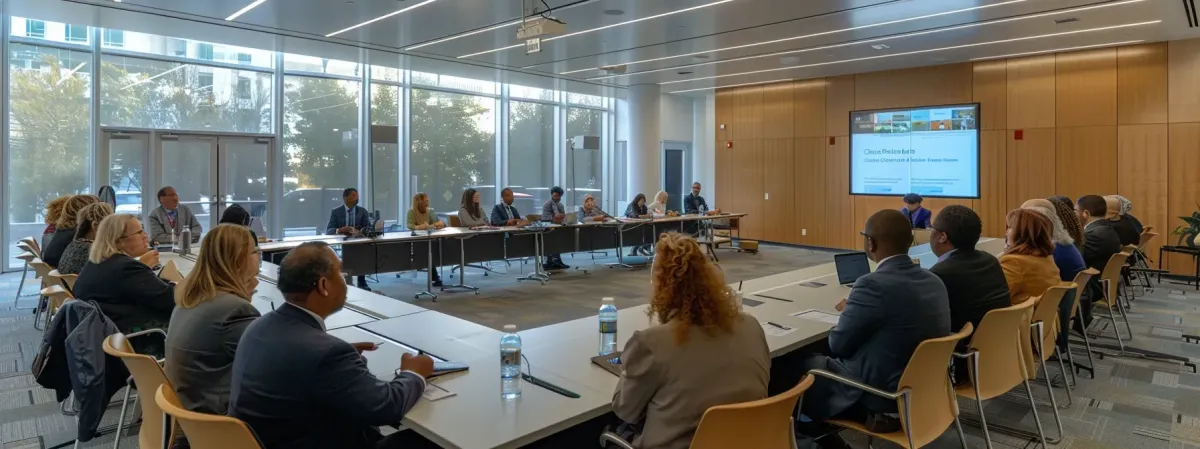
Modern collaborations and future opportunities between Ypsilanti, Ann Arbor, and Detroit. These cities are working on joint economic development projects, transportation initiatives to enhance mobility, and cultural programs to promote regional identity. They're also planning for sustainable growth together. These efforts build on their shared history and aim to strengthen regional ties.
Joint Economic Development Projects
Ypsilanti, Ann Arbor, and Detroit are collaborating on several joint economic development projects. The Ann Arbor SPARK initiative, for example, has expanded its reach to include Ypsilanti and parts of Wayne County, fostering regional entrepreneurship and innovation. This collaboration has led to the creation of shared business incubators and accelerator programs, benefiting startups across the three cities.
These three cities are also working together on workforce development programs. They've established partnerships between local businesses, community colleges, and universities to create tailored training programs that address regional skill gaps. These efforts have resulted in a more competitive regional economy and increased job opportunities for residents across Southeast Michigan. The key areas of collaboration include:
Shared business incubators and accelerator programs
Regional workforce development initiatives
Joint marketing efforts to attract businesses and investment
Coordinated infrastructure development projects
Collaborative research and development partnerships
Transportation Initiatives Enhancing Mobility
Ypsilanti, Ann Arbor, and Detroit are collaborating on innovative transportation initiatives to enhance regional mobility. The Regional Transit Authority of Southeast Michigan has proposed plans for a high-speed bus system connecting the three cities, aiming to reduce traffic congestion and improve access to jobs and educational opportunities across the region.
These three cities are also working together on sustainable transportation solutions. They've implemented shared bike and scooter programs that allow users to travel seamlessly between the three urban areas. Additionally, they're exploring the potential for electric vehicle charging networks to support the growing adoption of eco-friendly transportation options. These collaborative efforts are shaping the future of mobility in Southeast Michigan:
High-speed bus system connecting the three cities
Shared bike and scooter programs for seamless travel
Electric vehicle charging network expansion
Coordination of traffic management systems
Joint planning for future transit-oriented development
Cultural Institutions Promoting Regional Identity
Cultural institutions in Ypsilanti, Ann Arbor, and Detroit are collaborating to promote a shared regional identity. The Detroit Institute of Arts has partnered with the University of Michigan Museum of Art and the Ypsilanti Historical Society to create traveling exhibitions that showcase the region's artistic heritage, fostering a sense of unity among residents.
These cultural collaborations extend beyond visual arts. The Ann Arbor Symphony Orchestra now performs concerts in all three cities, bringing classical music to diverse audiences. These joint cultural initiatives have strengthened regional bonds and promoted a shared sense of pride in Southeast Michigan's rich cultural landscape:
Traveling art exhibitions showcasing regional heritage
Cross-city musical performances
Collaborative cultural festivals and events
Joint educational programs in arts and history
Shared marketing efforts to promote regional tourism
Planning for Sustainable Growth Together
Ypsilanti, Ann Arbor, and Detroit are working together to plan for sustainable growth. They've formed a regional sustainability council coordinating efforts to reduce carbon emissions, improve water quality, and preserve green spaces across the three cities. This collaboration has led to the development of a shared green infrastructure plan, which aims to manage stormwater runoff and enhance biodiversity throughout Southeast Michigan.
These three cities are also collaborating on smart growth initiatives to address urban sprawl and promote sustainable development. They've implemented joint zoning policies that encourage mixed-use developments and transit-oriented communities, fostering more walkable and connected urban areas. These efforts have resulted in several innovative projects that balance economic growth with environmental stewardship:
Regional sustainability council for coordinated environmental efforts
Shared green infrastructure plan for stormwater management
Joint smart growth policies to address urban sprawl
Collaborative renewable energy projects
Unified approach to sustainable transportation planning
Frequently Asked Questions
Q. How did transportation links contribute to the unity of Ypsilanti, Ann Arbor, and Detroit?
Transportation links like railroads and highways connected Ypsilanti, Ann Arbor, and Detroit, fostering economic ties and cultural exchange. These connections allowed for easier commuting, trade, and shared resources, contributing to the region's overall development and sense of unity.
Q. What role did industrial growth play in connecting these three cities?
Industrial growth played a crucial role in connecting these three cities by fostering economic interdependence, expanding transportation networks, and encouraging trade. As industries developed, they required resources and markets, leading to improved infrastructure and communication between the urban centers.
Q. How have educational institutions fostered relationships between Ypsilanti, Ann Arbor, and Detroit?
Educational institutions have played a key role in connecting Ypsilanti, Ann Arbor, and Detroit. The University of Michigan and Eastern Michigan University have fostered collaboration through research projects, student exchanges, and community outreach programs that span all three cities, strengthening regional ties and knowledge sharing.
Q. What cultural and social interactions have shaped the historical bonds of these cities?
Cultural exchanges, trade routes, and shared historical events have forged strong bonds between cities over time. Mutual influences in art, cuisine, and language have created lasting connections, while shared experiences during wars or natural disasters have often strengthened these ties.
Q. What modern collaborations exist between Ypsilanti, Ann Arbor, and Detroit?
Ypsilanti, Ann Arbor, and Detroit collaborate on various initiatives, including regional transportation projects, economic development programs, and cultural exchanges. These partnerships aim to strengthen Southeast Michigan's economy, improve infrastructure, and foster innovation across the three cities.
Conclusion
The historical bonds between Ypsilanti, Ann Arbor, and Detroit reveal a rich tapestry of shared experiences that have shaped Southeast Michigan's development. From early trade routes and industrial growth to educational institutions and cultural exchanges, these cities have forged strong connections that continue to influence their present-day relationships. Understanding these historical ties provides valuable insights into the region's current challenges and opportunities, highlighting the importance of collaboration in addressing shared issues. By recognizing and building upon this interconnected history, these communities can work together more effectively to create a sustainable and prosperous future for Southeast Michigan.




